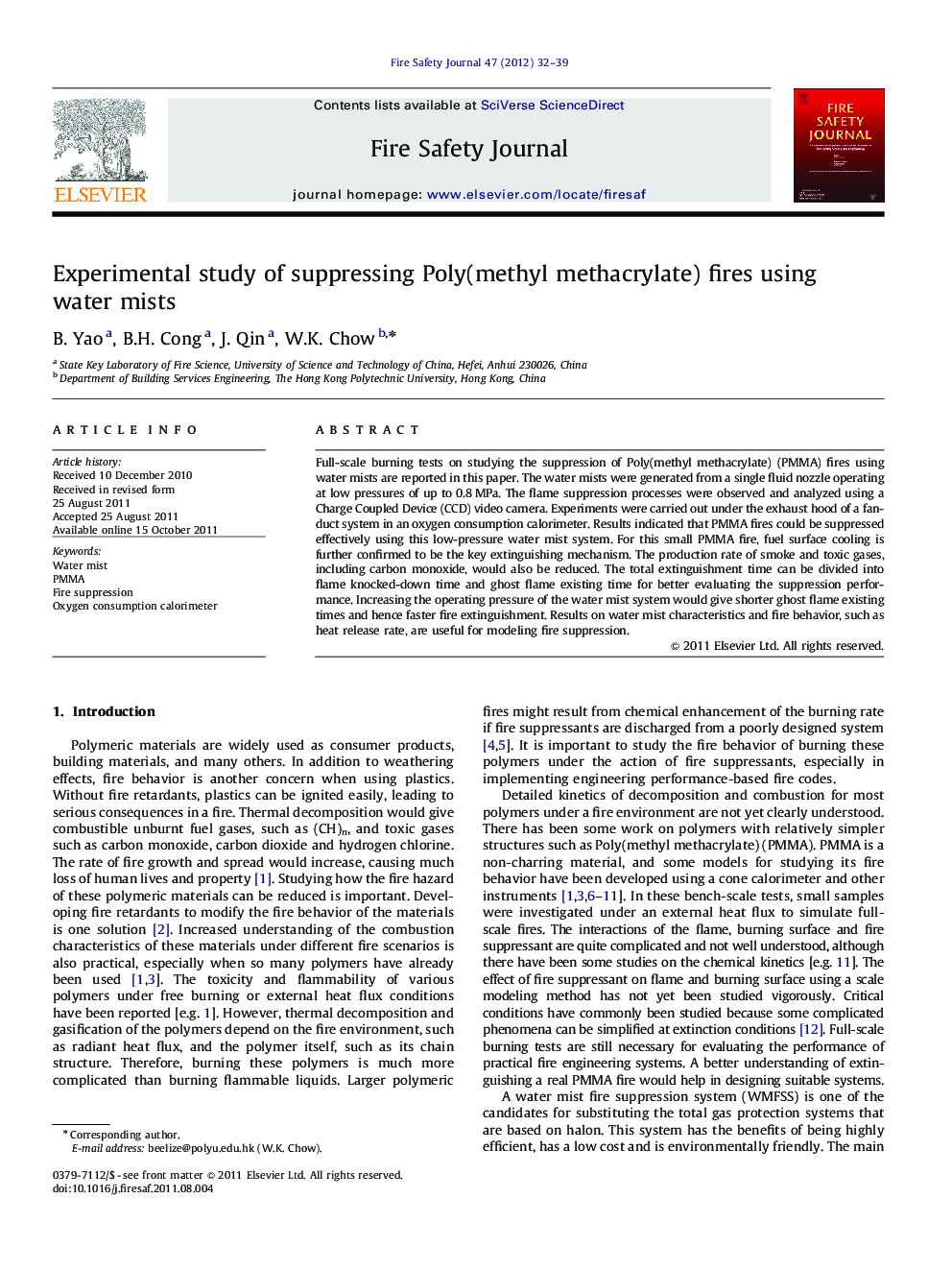| کد مقاله | کد نشریه | سال انتشار | مقاله انگلیسی | نسخه تمام متن |
|---|---|---|---|---|
| 270124 | 504730 | 2012 | 8 صفحه PDF | دانلود رایگان |

Full-scale burning tests on studying the suppression of Poly(methyl methacrylate) (PMMA) fires using water mists are reported in this paper. The water mists were generated from a single fluid nozzle operating at low pressures of up to 0.8 MPa. The flame suppression processes were observed and analyzed using a Charge Coupled Device (CCD) video camera. Experiments were carried out under the exhaust hood of a fan-duct system in an oxygen consumption calorimeter. Results indicated that PMMA fires could be suppressed effectively using this low-pressure water mist system. For this small PMMA fire, fuel surface cooling is further confirmed to be the key extinguishing mechanism. The production rate of smoke and toxic gases, including carbon monoxide, would also be reduced. The total extinguishment time can be divided into flame knocked-down time and ghost flame existing time for better evaluating the suppression performance. Increasing the operating pressure of the water mist system would give shorter ghost flame existing times and hence faster fire extinguishment. Results on water mist characteristics and fire behavior, such as heat release rate, are useful for modeling fire suppression.
► Water mists were discharged at low pressures up to 0.8 MPa.
► Small-scale PMMA fires up to 3 kg can be suppressed effectively.
► Production rate of smoke, carbon dioxide and carbon monoxide can also be reduced.
► Fuel surface cooling is further confirmed to be the key extinguishing mechanism.
► Increasing the operating pressure gives faster fire extinguishment.
Journal: Fire Safety Journal - Volume 47, January 2012, Pages 32–39